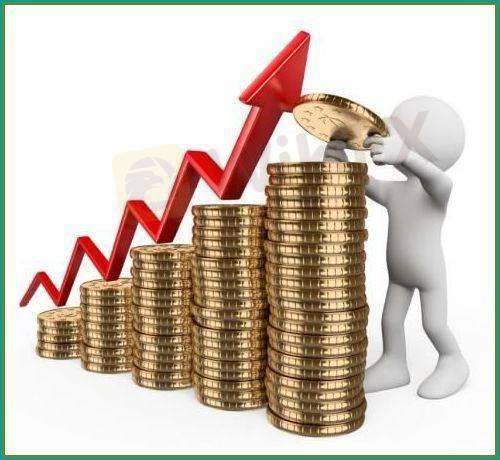
2025-02-17 17:24
IndustryFinancial Market Bubbles and Crashes
#firstdealofthenewyearastylz
A financial market bubble occurs when the price of assets, such as stocks, real estate, or commodities, rises far above their intrinsic value due to excessive speculation. This unsustainable growth is often fueled by investor optimism, easy credit, and herd behavior. When reality catches up—whether due to economic downturns, rising interest rates, or loss of confidence—the bubble bursts, leading to a market crash.
Stages of a Financial Bubble
1. Stealth Phase – Smart investors recognize potential value and invest early.
2. Awareness Phase – More investors join, and media attention grows.
3. Mania Phase – Speculative frenzy takes over, prices skyrocket, and fear of missing out (FOMO) drives irrational investing.
4. Blow-off Phase – Reality sets in, selling accelerates, and prices plummet, often leading to a market crash.
Famous Financial Bubbles and Crashes
Tulip Mania (1637) – One of the first recorded bubbles, where tulip bulb prices in the Netherlands soared and then collapsed.
South Sea Bubble (1720) – A British investment scheme that ended in disaster.
Great Depression Crash (1929) – Stock markets crashed, leading to global economic hardship.
Dot-com Bubble (2000) – Overvalued internet companies crashed, wiping out billions.
2008 Financial Crisis – Housing market collapse led to a global recession.
Causes of Market Crashes
Excessive speculation
Loose monetary policies
Fraud or poor financial regulation
Sudden economic shocks (wars, pandemics, or political instability)
Panic selling and loss of investor confidence
Lessons from Market Bubbles
Diversification helps mitigate risk.
Understanding asset valuation can prevent overpaying.
Long-term investing is safer than speculation.
Excessive leverage (borrowing to invest) is dangerous.
Market cycles are inevitable, and recognizing patterns can help investors make informed decisions.
Like 0

Esther590
Brokers
Hot content
Industry
Event-A comment a day,Keep rewards worthy up to$27
Industry
Nigeria Event Giveaway-Win₦5000 Mobilephone Credit
Industry
Nigeria Event Giveaway-Win ₦2500 MobilePhoneCredit
Industry
South Africa Event-Come&Win 240ZAR Phone Credit
Industry
Nigeria Event-Discuss Forex&Win2500NGN PhoneCredit
Industry
[Nigeria Event]Discuss&win 2500 Naira Phone Credit
Forum category

Platform

Exhibition

Agent

Recruitment

EA

Industry

Market

Index
Financial Market Bubbles and Crashes
 Hong Kong | 2025-02-17 17:24
Hong Kong | 2025-02-17 17:24#firstdealofthenewyearastylz
A financial market bubble occurs when the price of assets, such as stocks, real estate, or commodities, rises far above their intrinsic value due to excessive speculation. This unsustainable growth is often fueled by investor optimism, easy credit, and herd behavior. When reality catches up—whether due to economic downturns, rising interest rates, or loss of confidence—the bubble bursts, leading to a market crash.
Stages of a Financial Bubble
1. Stealth Phase – Smart investors recognize potential value and invest early.
2. Awareness Phase – More investors join, and media attention grows.
3. Mania Phase – Speculative frenzy takes over, prices skyrocket, and fear of missing out (FOMO) drives irrational investing.
4. Blow-off Phase – Reality sets in, selling accelerates, and prices plummet, often leading to a market crash.
Famous Financial Bubbles and Crashes
Tulip Mania (1637) – One of the first recorded bubbles, where tulip bulb prices in the Netherlands soared and then collapsed.
South Sea Bubble (1720) – A British investment scheme that ended in disaster.
Great Depression Crash (1929) – Stock markets crashed, leading to global economic hardship.
Dot-com Bubble (2000) – Overvalued internet companies crashed, wiping out billions.
2008 Financial Crisis – Housing market collapse led to a global recession.
Causes of Market Crashes
Excessive speculation
Loose monetary policies
Fraud or poor financial regulation
Sudden economic shocks (wars, pandemics, or political instability)
Panic selling and loss of investor confidence
Lessons from Market Bubbles
Diversification helps mitigate risk.
Understanding asset valuation can prevent overpaying.
Long-term investing is safer than speculation.
Excessive leverage (borrowing to invest) is dangerous.
Market cycles are inevitable, and recognizing patterns can help investors make informed decisions.
Like 0
I want to comment, too
Submit
0Comments

There is no comment yet. Make the first one.

Submit
There is no comment yet. Make the first one.